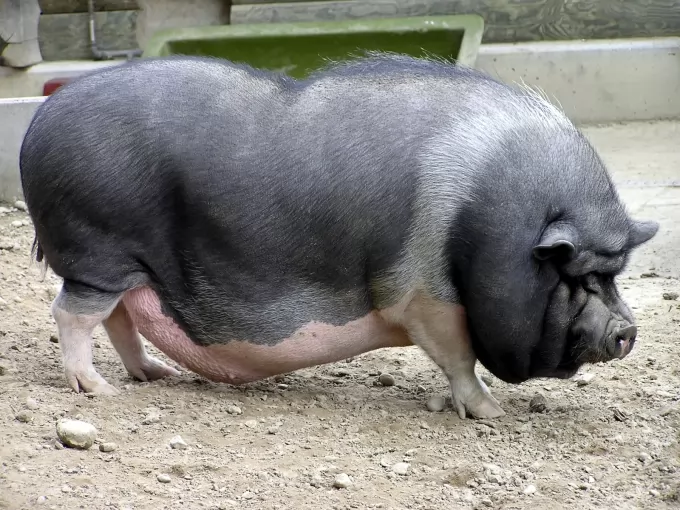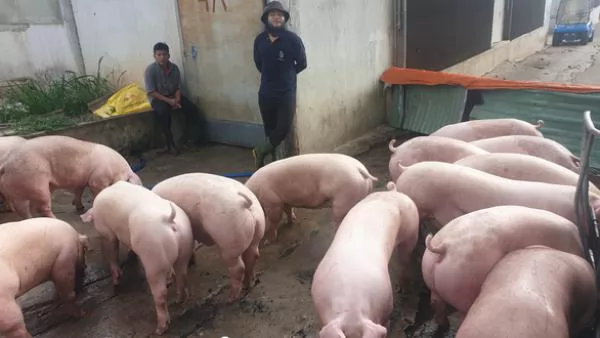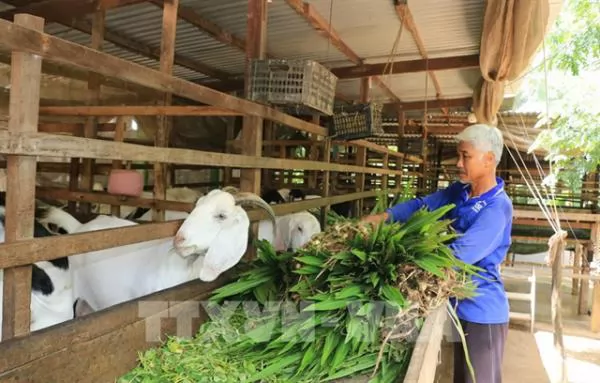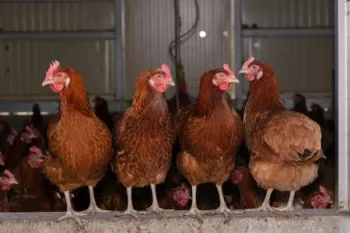22 Vietnamese local pig breeds - Part 1

Vietnam is among the countries with highest biodiversity. According to statistics, Vietnam has dozens of rare and precious pig breeds distributed across the country.
In recent years, the Ministry of Agriculture and Rural Development and a number of localities have successfully restored and developed many local pig breeds that have high economic value.
Vietnam Agriculture and the National Institute of Animal Sciences (MARD) would like to introduce readers to the local breeds of pigs in Vietnam.
1. Mong Cai pig
Origin and distribution: Mong Cai pig originated from Mong Cai city, Quang Ninh province, now presents in many northern and central provinces, the Central Highlands with the largest number among local breeds.
Appearance characteristics: there are large bones and small bones. Mong Cai pig has a black head, white triangular or diamond-shaped in the forehead, and a white snout. The back, buttocks, neck are black in the shape of a saddle, the rest is white. Mong Cai pig has quite high prolificacy, average litter size is 10-16, the weight of newborn piglets is 0.5-0.7 kg, and the lean rate is 32 - 35%.
Direction of use: Mong Cai pig can be purebred for meat or as a base sow to cross with exotic males to breed F1 hybrid for commercial production.
2. I pig
Origin and distribution: I pig is a local breed in the North of Vietnam. However, due to the low economic efficiency and in danger of extinction, this pig breed has been raised by the Ministry of Agriculture and Rural Development and Dabaco Group Vietnam to keep the original breed.
Appearance characteristics: This fat pig breed, also known as wrinkled pig, has less meat than fat (lean ratio is only 36% while fat is 54%). It takes a whole year for this pig to grow mature but it only weigh 40-50 kg, while breeding pig for meat only takes six months to reach 70-80 kg.
Directions of use: Can be raised for conservation or for specialty pork products.
3. Ban Pig
Origin and distribution: Ban Pig is mainly distributed in mountainous districts such as Mai Son, Thuan Chau (Son La province), East Dien Bien, Tua Chua, Muong Nhe (Dien Bien province), the mountainous districts of Hoa Binh province, especially Ha Bac, Cao Phong, Lac Son, Mai Chau, Tan Lac.
Appearance characteristics: Ban Pig has black hair and black skin. Some has white dots on the forehead, legs and tip of tail. Its hips has manes. The muzzle is pointed and small, the face and head are long, the ears are small, the belly is slim, the legs are small and high, with standing hoofed toes.

Profilicacy: Female pig is in heat at 5 - 6 months. Average litter size is 6 - 6.5; number of piglets weaned at 60 days old is 5 - 6; Weight of a newborn piglet: 2.5 - 3.0kg. Slow growth: 4.4 kg at 2 months and 28 - 32 kg at 8 months.
Direction of use: Breed for specialty pork products.
4. A Luoi grass-fed pig
Origin and distribution: Originated in the Central region, distributed along the Truong Son range in Thua Thien Hue, Quang Binh, Quang Tri, Quang Nam, concentrating in the mountainous districts of Thua Thien Hue province, such as A Luoi, Nam Dong, Huong Tra and Tay Giang district, Quang Nam province.
Appearance characteristics: The hair is black or black and white long and thick. The muzzle is long, the bones are small, the legs are weak, the belly is saggy, the skin and the hair are thin.
Prolificacy: Boars are mature at 3 months, can be mated at 4 months and usually used at 7-8 months. The female pig is in heat for the first time at 200 days old, giving birth for the first time at 10-12 months. Litter size is 5 - 6; each year they give birth from 1.2 to 1.5 times. New piglets weight 0.4 kg; Wean at 3 kg and at 2 months of age.
Average weight at 12 months is 50 kg. Weight at maturity: 70 kg for male and 60-70 kg for female pig. Consume about 7 - 8kg of animal feed for each kg weight gain. 40% lean, 28% fat. High resistance to disease, harsh environments and poor nutritional conditions.
Direction of use: Breed for specialty pork because its delicious taste is favored by consumers.

VAN
Author: Nguyen Huan. Translated by Meagan Phan. Edited by Duc Huy.
Maybe you are interested

Livestock feed prices keep rising in Vietnam, breeders face heavy losses
The ongoing increase in prices of bran poses difficulties for breeders, putting them at risk of great losses, livestock breeding associations have warned.

England: Details of health and welfare grants for laying hens housing revealed
Information about the new post-Brexit health and welfare grant support for egg farmers in England has been released by the government's Rural Payments Agency.

Goats pull Đồng Tháp Province farmers out of poverty
Breeding goats has helped many farmers in the Cửu Long (Mekong) Delta province of Đồng Tháp escape poverty and earn a steady income since the animal is easy and inexpensive to raise.





